Finding the best dog paw balm on the market can be hard. You keep staring at the ingredients and wondering if you’re buying the right thing. Luckily, our experts have thoroughly researched and tested each product reviewed below to bring you the best dog paw balms on the market today.
To properly protect your dog’s paws from hot pavement this summer, you can opt for dog shoes or a dog paw balm, which dogs seem to like best and have longterm benefits.
What Is Dog Paw Balm?
Dog paw balm is a protective ointment that can be applied to dogs’ paw pads to moisturize and offer a protective layer on their pads so dogs aren’t sensitive to hot pavement or snowy conditions outside depending on the season.
Our top picks for best dog paw palm are below:
- Best Overall: Paw Nectar 100% Organic and Natural Dog Paw Balm Buy on Amazon or Read Full Review
- Tried and True Brand: Musher’s Secret Paw Wax Buy on Amazon or Read Full Review
- Budget Friendly: Vets Preferred Paw Balm Buy on Amazon or Read Full Review
If you want to read more about dog paw balms, how to use them, and how our veterinary technician and consulted pet owners chose the top recommended dog paw balms make sure to jump to the bottom of this page before reading our reviews.
Paw Nectar from Quality Pet uses all-natural ingredients – something any dog owner will appreciate in their dog paw balm. The base is shea butter and cocoa butter, with soy oil, avocado oil, and coconut oil added on top. Then you get a boost from rosemary seed extract. The formula works on paws with drying and cracking, smoothing them out, and providing critical moisture. Our testers have been known to even use it on their own dry cuticles because it’s super absorbent and moisturizing and 100% organic.
Some testers have said the dog paw balm has a firm texture but it glides on nicely when you press with your finger and the texture allows it to stay on your dog’s paws longer which means fewer applications and a less fussy pup!
The Good
- 100% organic and natural ingredients
- Protects and restores cracked paws
- Contains shea butter, cocoa butter, soy oil, and avocado oil
- Money back guarantee
- Made in the USA
The Bad
- Firmer texture
When you want heavy-duty paw protection, you turn to Musher’s Secret (which, ironically, isn’t a secret). This dog paw balm came out of Canada, originally designed to protect sleddogs from the icy winter conditions. And it WILL do that – as well as keep your dog’s paw pads safe in every environmental condition you can think of. They combine white and yellow beeswax with vegetable oil, carnauba wax, and candelilla wax to form a firm seal between your dog’s foot and the outside world. The oils and waxes are ALL 100% natural and food-grade, with no GMOs. And if you want, you can use the wax on your dog’s nose or elbows with the same effectiveness.
This is the paw balm we break out for our Greyhound when her feet get irritated during the summer. And it works beautifully. She doesn’t care about the smell (or taste – not that she licks it off), and it soothes her paw pads within a day or two.
So what are the downsides? The wax WILL cause your pup to lose traction on hardwood floors and tile. Give the dog paw balm a few minutes to soak in before you try to walk. And if you’re dog has sensitive skin, the wax may be too harsh (candelilla IS a grass-like plant).
The Good
- Contains beeswax, vegetable oil, carnauba wax, and candelilla wax
- 100% natural and food-grade
- No GMOs
The Bad
- Paws will lose traction until absorbed
- May be too harsh for sensitive paws
Pet Head is one of the dog paw balms out there that works equally well as a dog nose balm. They start with shea butter, then mix in jojoba, aloe vera, coconut oil, olive oil, and mango. You also get the benefit of vitamins E and F for soft skin. The jar’s a decent size to get you through a rough winter season, and the soft texture makes it easy to massage into your dog’s paw pads (or onto their nose).
The downsides? Unfortunately, this dog paw balm comes with a noticeable scent, which some dogs find enticing. And that’s a big problem because it contains coconut oil AND aloe vera. The jury’s uncertain about coconut oil and dogs, but aloe vera WILL upset your kiddo’s stomach. You want to keep your dog from ingesting this product, especially because it’s SLOW to absorb.
The Good
- Contains shea butter, jojoba, olive oil, and mango
- Includes vitamins E and F
- Soft texture
The Bad
- Contains aloe vera
- Contains coconut oil
- Scented
- Slow to absorb
Bodhi Dog starts with USDA-certified ingredients, something that means a lot to many owners. They have a beeswax base mixed with shea butter, jojoba oil, hemp seed oil, and calendula extract. It’s a nice blend that soothes your dog’s paws while moisturizing away the cracks and dryness. There’s no strong odor, either – something both of you will appreciate. Best of all, you get a 100% money-back guarantee!
Downside? This dog paw balm is on the thick side, which means you’ll need to work it with your hands to apply it.
The Good
- Contains beeswax, shea butter, jojoba oil, hemp seed oil, and calendula extract
- USDA-certified organic
- 100% Money-back guarantee
The Bad
- Thick texture
Have you used Snout Soother – either for your dog’s nose or as sunscreen? Well, Paw Soother is the dog paw balm cousin from Natural Dog Company. They start with carnauba wax, candelilla wax, cocoa butter, cupuacu butter, and mango butter. Then they add rice bran oil, sunflower oil, hemp seed oil, jojoba oil, coconut oil. And, finally, they top it off with calendula, chamomile, rosemary, and tea tree. (Whew!) It’s a powerful boost of all-natural ingredients designed to tackle dry, cracked paw pads. All in an easy stick applicator (no need to get your hands messy!) And you get a 90-day warranty, just in case you’re not satisfied.
The downsides? While all-natural, they use some questionable ingredients. Coconut oil pops up, which is up to you. But tea tree oil? Nope – BAD idea. And the mixture produces a scent dogs don’t like (which is good because that essential oil causes trouble in as little as SEVEN drops). Plus, it’s expensive for the size of the stick.
The Good
- Contains carnauba wax, candelilla wax, cocoa butter, cupuacu butter, mango butter, rice bran oil, sunflower oil, hemp seed oil, jojoba oil
- All-natural ingredients
- 90-Day warranty
The Bad
- Expensive
- Contains tea tree oil
- Contains coconut oil
- Scented
ResQ adds a special extra ingredient to their dog paw balm: manuka honey. Veterinary practices have turned to medical-grade manuka honey to aid in wound healing – and the benefits extend to ANY skin condition. (Not gonna lie – I have a stash of packets for my worst injuries) ResQ starts with shea butter, then adds olive oil, coconut oil, and hemp seed oil. They also mix in aloe vera, blue-green algae, vitamins A, B, C, E, and the manuka honey. The mixture provides antibacterial protection, as well as anti-inflammatory properties. It’s a non-greasy formula that works on paws, skin, and noses. And you have a money-back guarantee you can rely on.
So what are the downsides? You guessed it: the aloe vera and coconut oil. It also has a sticky texture that gums together fur, which can spell trouble for dogs with fuzzy feet. And manuka honey, in general, is pricey. So anything with that ingredient is equally costly.
The Good
- Contains shea butter, olive oil, and hemp seed oils
- Contains manuka honey and blue-green algae
- Includes vitamins A, B, C, and E
- Money-back guarantee
The Bad
- Expensive
- Contains aloe vera
- Contains coconut oil
- Sticky
What does “veterinarian-grade” mean? It means Vets Preferred produces their dog paw balm in a lab-quality facility, which earns them a Good Manufacturing Process seal of approval. And, don’t worry, the facilities are all in the U.S. They start with yellow and white beeswax and then add shea butter, cocoa butter, mineral oil, coconut oil, and wheat germ oil. The beeswax sets up a natural barrier while the oils go to work restoring moisture to your dog’s paw pads.
Downsides? It’s hard to get away from coconut oil in dog paw balms. Keep an eye out if your dog decides to ingest the balm. This goes double because of the mineral oil – it’s a key component in most laxatives. (I think that’s self-explanatory) And there IS a fragrance, which dogs tend to find enjoyable. Definitely add a cover to prevent unwanted toe nibbles.
The Good
- Contains beeswax, shea butter, cocoa butter, mineral oil, and wheat germ oil
- GMP seal of approval
- Manufactured in lab-grade facilities
The Bad
- Contains coconut oil
- Mineral oil is a laxative if ingested
- Scented
Petsmont Organic Paw Balm joins Bodhi Dog as one of the few certified organic dog paw balms on our list. While it isn’t vegan, the beeswax helps keep the melting point high so the wax doesn’t melt on those hot Summer days. In addition, Petsmont’s balm is hypoallergenic, which is great for sensitive dogs (and people!)
On the downside, some people complained that the balm was difficult to apply and spread because it was too hard and thick. In addition, the balm is scented so it might not be great for sensitive dogs
The Good
- Contains beeswax, shea butter, and jojoba oil
- USDA certified organic
- Hypoallergenic
The Bad
- Contains coconut oil
- Hard to apply because of thickness
- Scented
VetPro Complete Paw Balm was formalated by Dr. Joseph, a veterinarian for 30 years. VetPro’s formulation is made in the USA and is all natural. This dog paw balm contains sunflower oil, shea butter, vitamin E, and beeswax, which are all great for protecting and moisturizing your dog’s paws.
The downsides? Some people complained about the consistency being strange or too hard. The aloe could upset your dog’s stomach. Finally, some complained that the scent was too strong.
The Good
- Contains sunflower oil, coconut oil, shea butter, and beeswax
- All natural ingredients
The Bad
- Strange consistency
- Aloe vera could upset stomach
- Strong scent
Paw Soother makes another appearance on our list for this handy form factor. This larger format is great for bigger dogs that have more surface area to cover.
Downsides? This version of Paw Soother is going to cost you, it’s one of the priciest products on the market per ounce.
The Good
- Contains carnauba wax, candelilla wax, cocoa butter, capuacu butter, mango butter, rice bran oil, sunflower oil, hemp seed oil, and jojoba oil
- All-natural ingredients
- 90-day warranty
The Bad
- Expensive
- Contains tea tree oil
- Contains coconut oil
- Scented
Primens claims it is safe for licking and for your dog’s paws (and also can provide relief for your cat!).
Despite having over 20k reviews, most of the reviews on Amazon are for some sort of pet water filter. There seems to be some foul play in how the company changed the listing from a water filter to a paw balm and transferred the reviews. Without any reviews for the actual paw balm, it’s hard to gauge what the real customer feedback is.
The Good
- GMP quality
- All natural ingredients
- Good for paws and nose
The Bad
- No reviews for the actual product yet
- Contains aloe
- Contains coconut oil
Understanding Dog Paws
You recognize paw pads right away. Unlike cats, dogs lack the ability to retract their claws, so they remain visible on every footprint. (Though most graphics often mix this up and pair cat paw prints with dog information) Dog paws have three distinct pad types that come together to support the leg:
- Digital Pads: The pads that hold the claws
- Metacarpal Pad: The large pad in the middle of the foot
- Carpal Pad: The small pad higher up, which is the equivalent of our heel
The metacarpal and digital pads take the brunt of your dog’s weight. They’re mostly fatty tissue that acts as a shock absorber. And your dog gets some insulation, too. But a shield? You won’t find that in the skin or tissue. And since those pads are doing most of the work – supporting your dog while they play, run, and walk – they take a lot of abuse.
Reasons to Treat Your Dog’s Paws with Dog Paw Balm
Your dog’s feet encounter every possible situation. Think about it: they touch EVERYTHING outside. And the outdoor world is TOUGH. All of those environments conspire to assault your dog’s paws. The results are paw pads that grow sore, dry out, crack, and possibly develop blisters. But your pup wants to play and go for that walk, so they continue to head for the door. They don’t realize the hazards waiting outside.
Temperature
Hot AND cold conspire to damage your dog’s paws. Both extremes dry paw pads, leading to cracking and discomfort. They’re ideal situations for dog paw balms.
Heat
When the mercury climbs, sidewalks and asphalt become dangerous. Concrete can BURN your dog’s feet when temperatures go above 90F!
Want to know whether it’s too hot to walk outside? There’s an easy test: place the back of your hand on the sidewalk. If you can’t hold it there COMFORTABLY for seven seconds, your dog shouldn’t walk on it. Wait until dawn or dusk when the sun isn’t blazing. Or stick to the grass where temps won’t soar, and ALWAYS opt for the shade.
Cold
Fat provides better insulation against dropping temperatures, but that won’t stop winter from irritating your dog’s paw pads. Cold air dries, leaving the skin of your dog’s feet primed for cracking. (Think of your skin during the frigid months)
Then consider other possible complications. Snow itself is harsh against dog feet. And people like to lay down salt, sand, or de-icers to cope with the wintry mess. The chemicals usually AREN’T dog-friendly, leading to unhappy paws.
Some dogs tolerate wearing snow boots for protection, but their feet sweat inside. Dog paw balms help keep their paws looking and feeling their best.
Allergies
Dogs suffer from allergies, the same as we do. And the most common source of their misery? The outside world. So playing out in the yard may lead to irritation of their feet. You’ll see your canine licking or chewing at their paws excessively. And the skin becomes pink, red, and raw.
Our Greyhound gets red and splotchy whenever she spends too much time in the grass. And, of course, she insists on rolling in the grass ALL THE TIME. It’s a never-ending battle for us in the summer.
You need to speak with your veterinarian about treating the underlying allergies. And you can discuss dog paw balms to help soothe the irritation. Go over the ingredients carefully, though. If your dog has environmental allergies, plant ingredients may make the problem worse!
What to Look for in a Dog Paw Balm
Dog paw balms help your pup’s feet cope with the outside world. They form a protective barrier while soothing the paw pads at the same time. (It’s a two-for-one deal!) You want to chat with your vet before you start any balms, though. There ARE medical conditions that lead to dry, cracked paws, and infection can occur on your dog’s feet (the ground isn’t sanitized). Make sure your dog’s healthy FIRST.
Types of Dog Paw Balms
As you look at your dog’s activity level, you can decide which form of dog paw balm works best for your situation. Each one works a little differently:
- Balm: Balms start with a wax base and have a firm texture. They typically contain additional ingredients intended to soothe irritation.
- Butter: Butters are similar, but the texture’s softer. Their base is usually shea butter.
- Wax: If you want heavy-duty, you reach for a wax. They start with a base of beeswax.
If you want to protect during the summer, you want a dog paw balm containing beeswax. Why? Beeswax melts at 120F. This means it WILL hold up in the blistering heat. (But it doesn’t mean you get to walk your dog on the concrete)
Choosing a Dog Paw Balm
Dog paw balms work for every dog. Whether your pup hits the trail on the weekends, trots through the park in the city, or sniffs down your local street. The outdoors can produce dry, cracked paw pads that cry out for relief. However, not every dog paw balm is created equal, and you want to make sure you’re picking the best option for your needs.
- Ingredients: If you want a heavy-duty dog paw balm, you need to see beeswax in the ingredients. But you also want to look for potential concerns in the list. Your dog may lick their paws after application, and you don’t want them to get an upset stomach.
- Materials: Oils go a long way to introducing moisture to dry paw pads, but are they going to leave greasy paw prints throughout your house? You want a nice balance.
- Texture: The different dog paw balms have texture differences. Can you cope with a firm balm you may have to work with your fingers? Or do you want something softer?
- Odor: Dogs have a MUCH better sense of smell than we do. Which means they’ll smell that dog paw balm on their feet. Whether it smells good or not, you want to consider that.
How to Apply Dog Paw Balms
You spoke with your vet about your dog’s paw pads. And you’ve settled on the type of dog paw balm that’ll work best for your pup. You don’t want to see those dry, cracked toes anymore. But how to best apply the dog paw balm? Not to worry – it’s not as difficult as you think.
- Use a damp cloth to gently clean the paw. (No soap)
- Pat the paw dry. You don’t want to accidentally trap moisture under the paw balm.
- Rub a thin layer of the dog paw balm into all of the pads. The best way is to take some into your fingers and massage it onto the pad. Twisting your dog’s foot into the tin won’t cover everything. It WILL make a mess and waste a lot of the balm.
- Ideally, cover your dog’s foot with a bootie for at least 30 minutes. This will prevent your pup from licking AND allow the dog paw balm to settle in. (If you’re going straight outside, you can skip this step)
That’s it! See? Nothing to it.
Conclusion
Dogs have no problem charging forward – even on paw pads that are cracked, dry, or painful. It’s up to you to watch for limping, licking or chewing, or visible cracks and blisters. As soon as you spot a problem, you want to make a trip to the vet to review the problem. While you’re there, you can discuss dog paw balms and whether they may benefit your pup going forward in the future.
After all, you can’t put your dog in a bubble to protect them from the outside. And they’d get miserable cooped up inside all day. Some TLC on their tootsies now and then is the better way to go. Unless your dog LOVES shoes, that is.

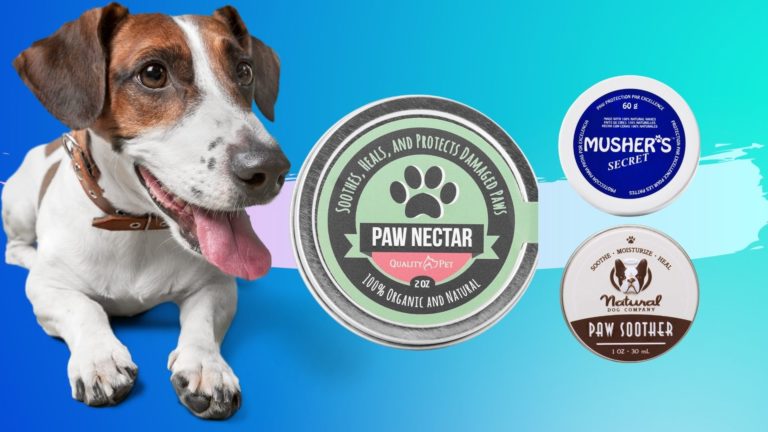
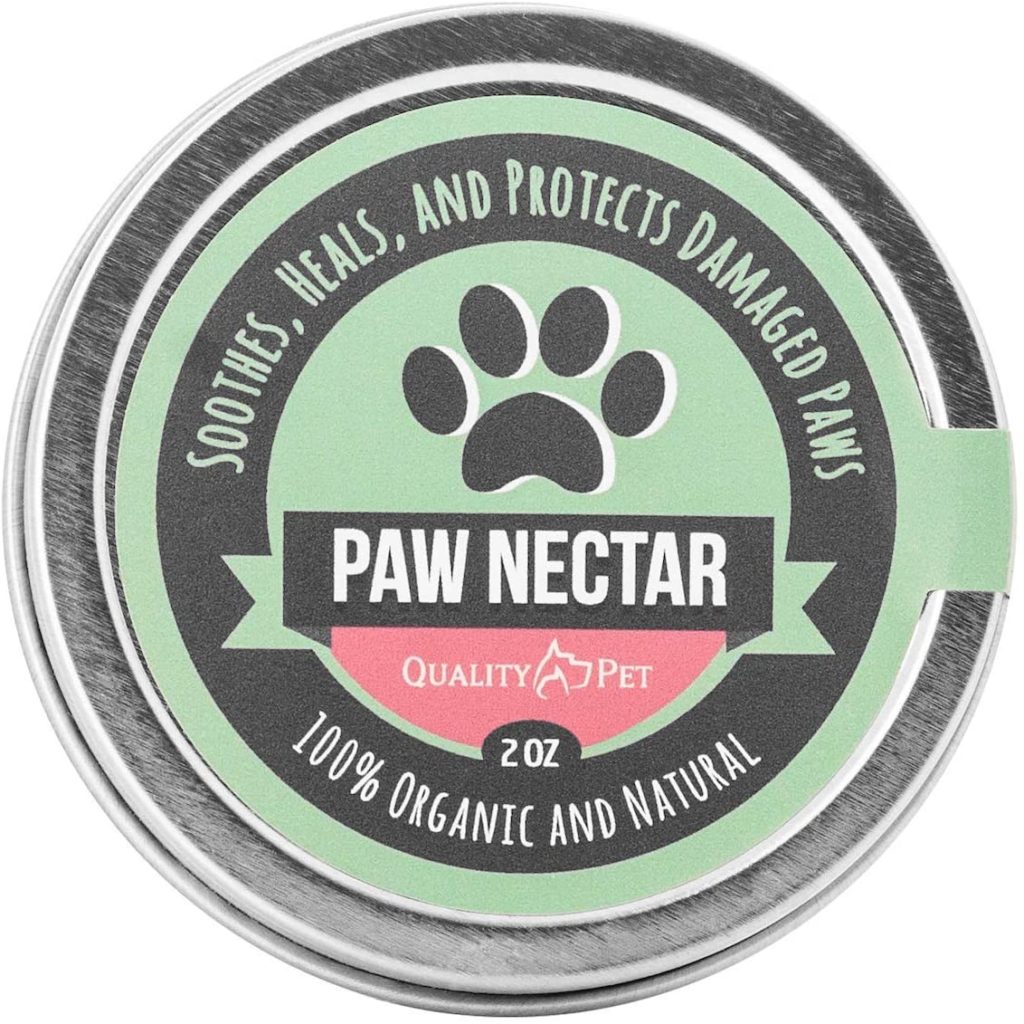
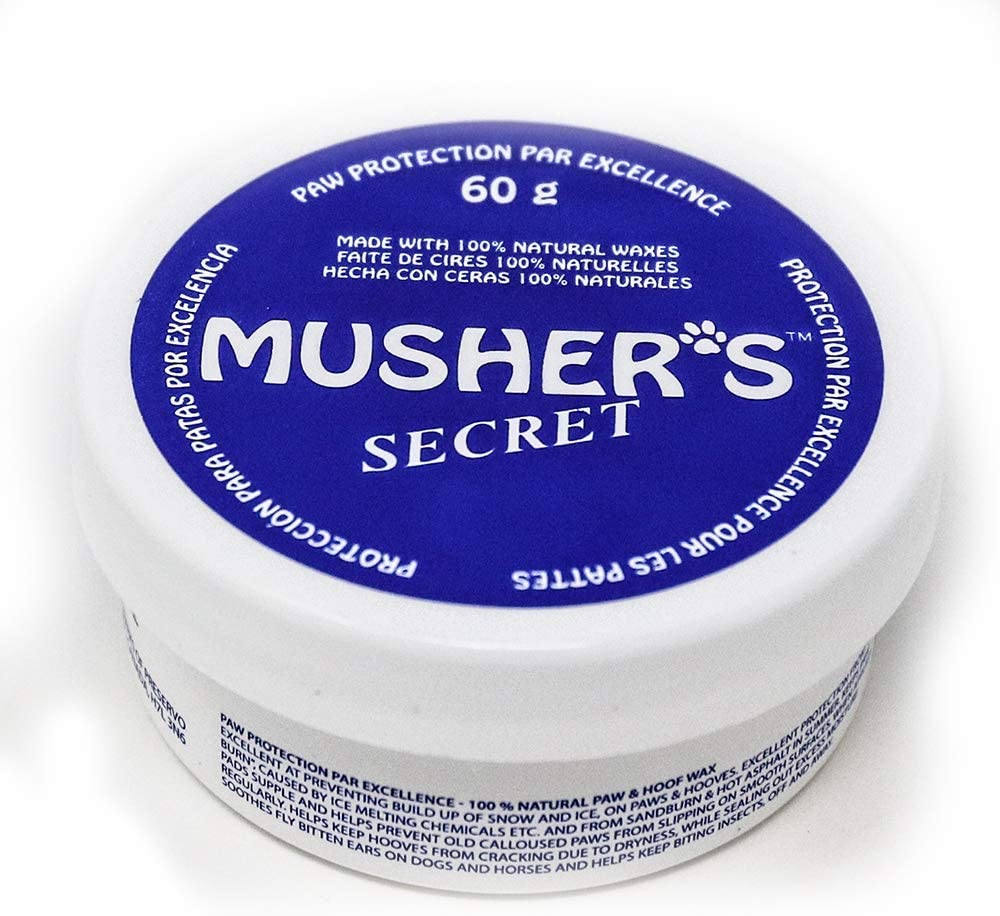
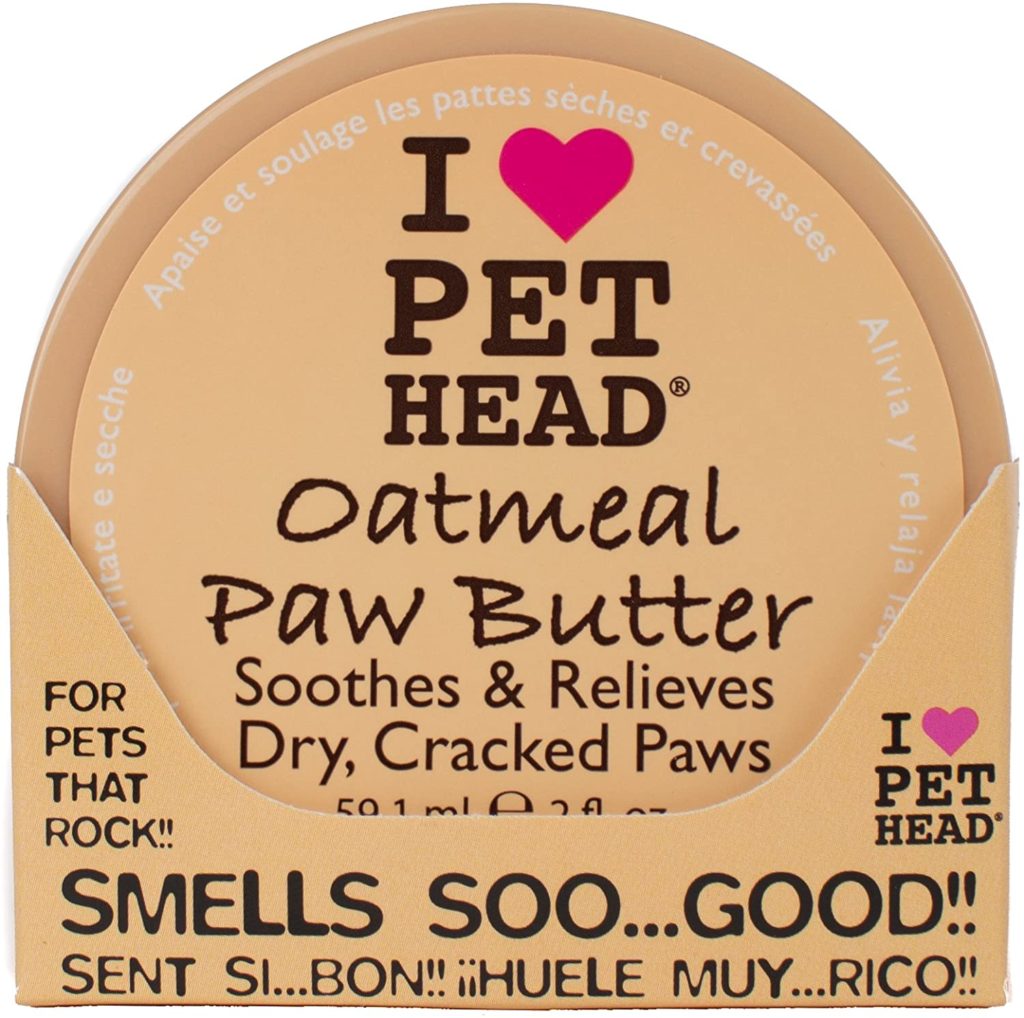
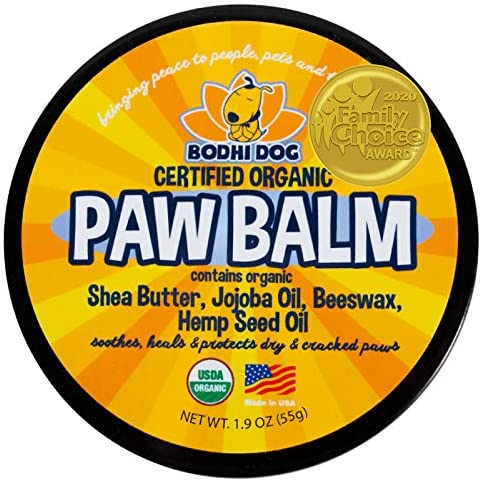

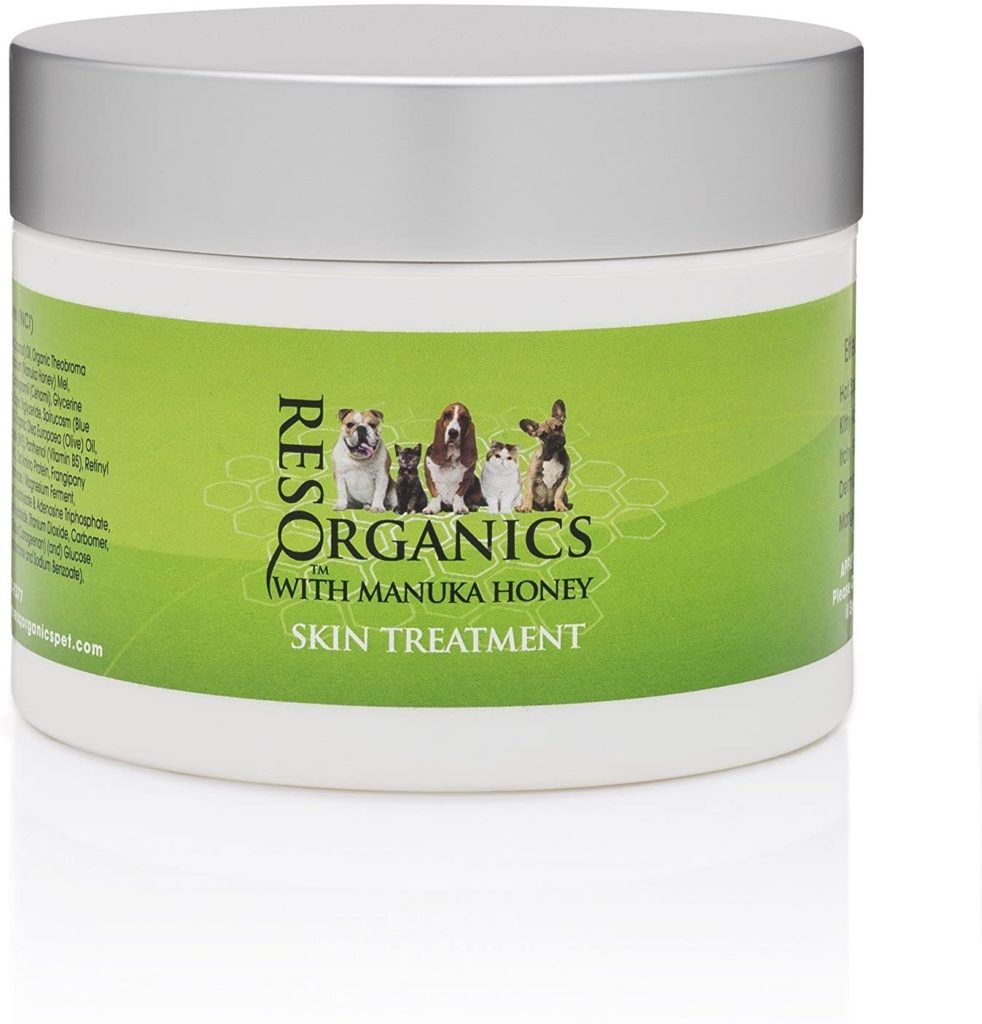
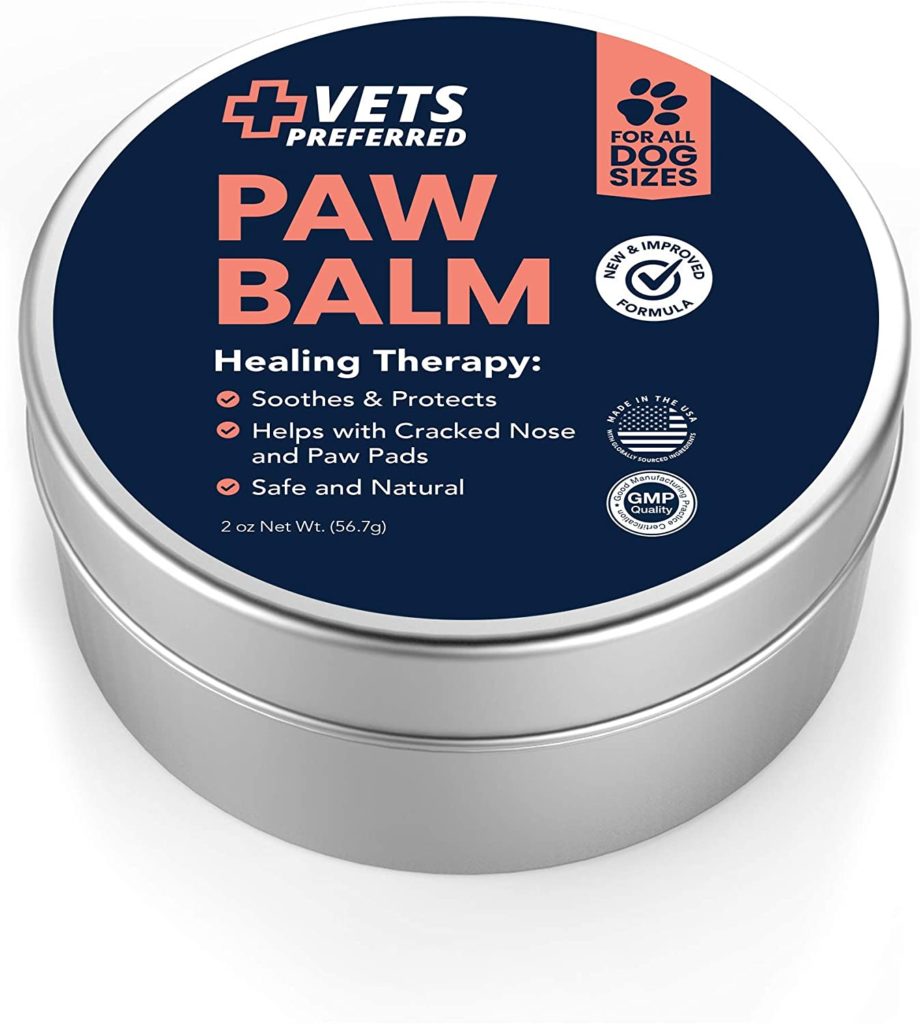
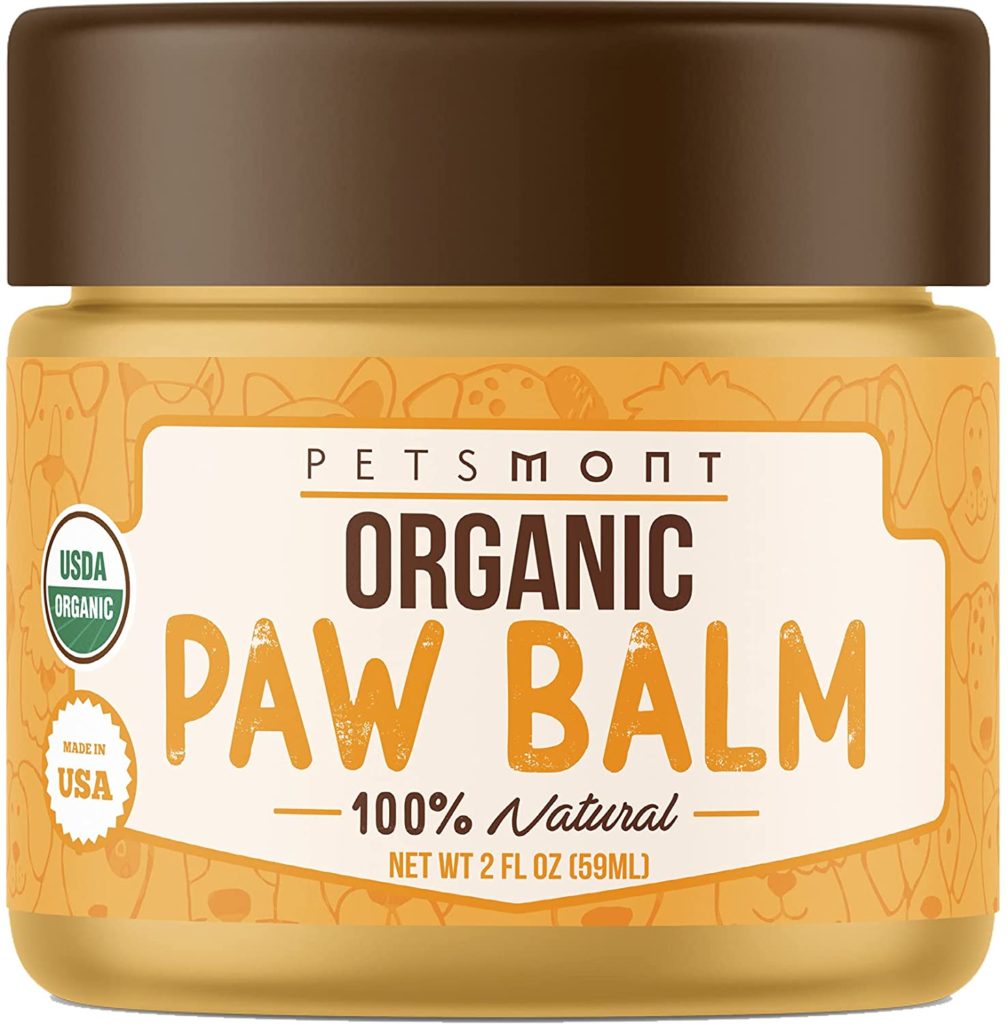
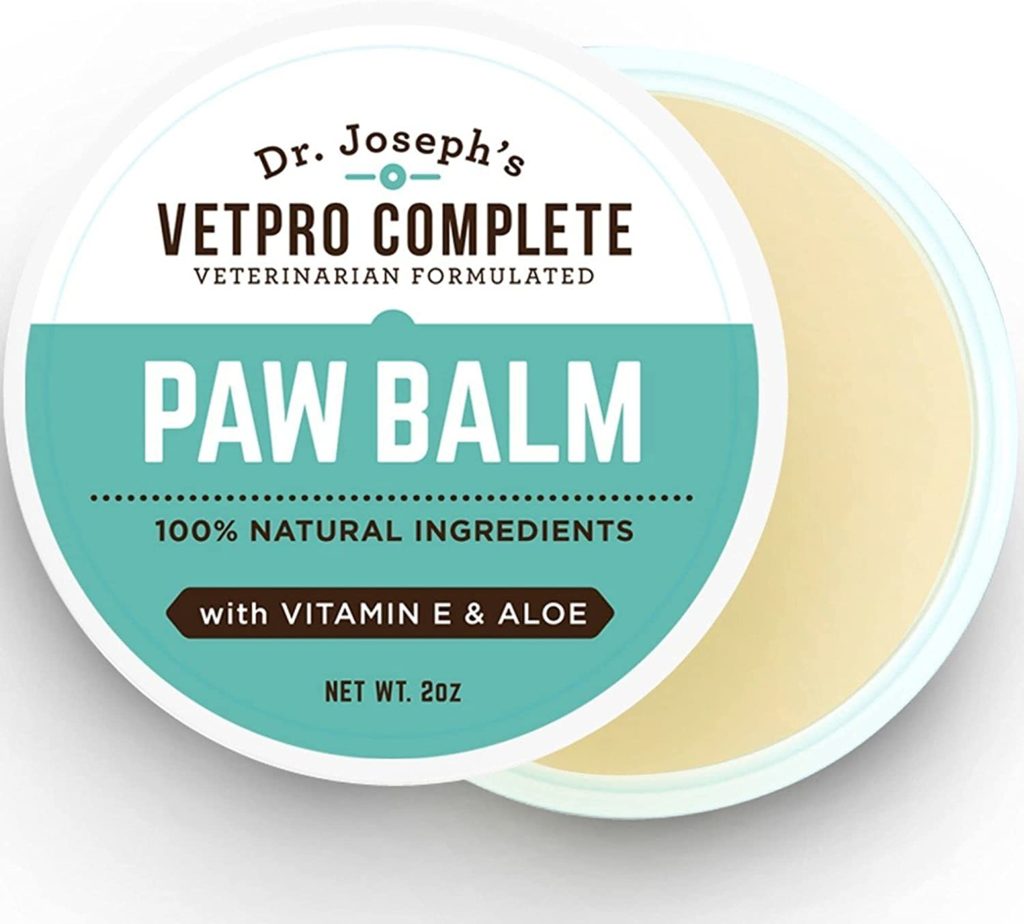
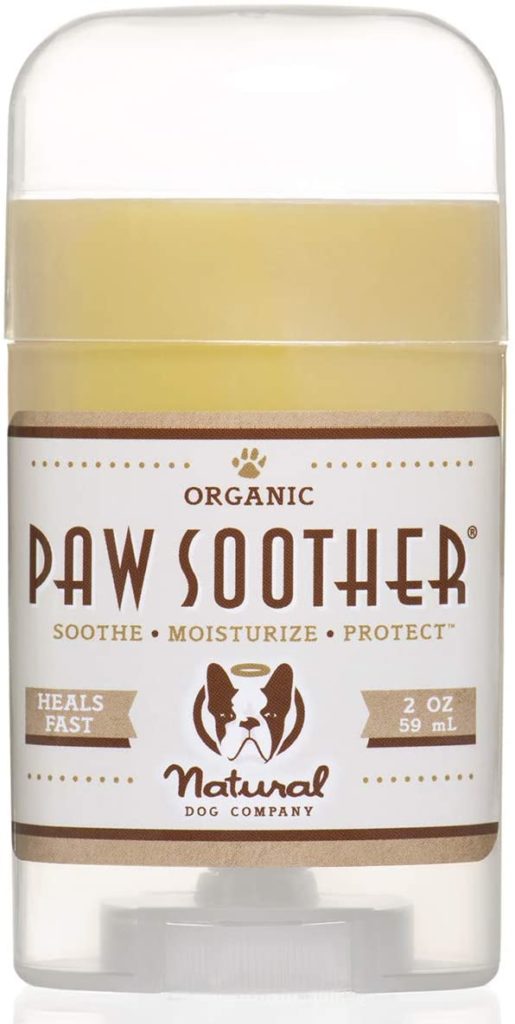
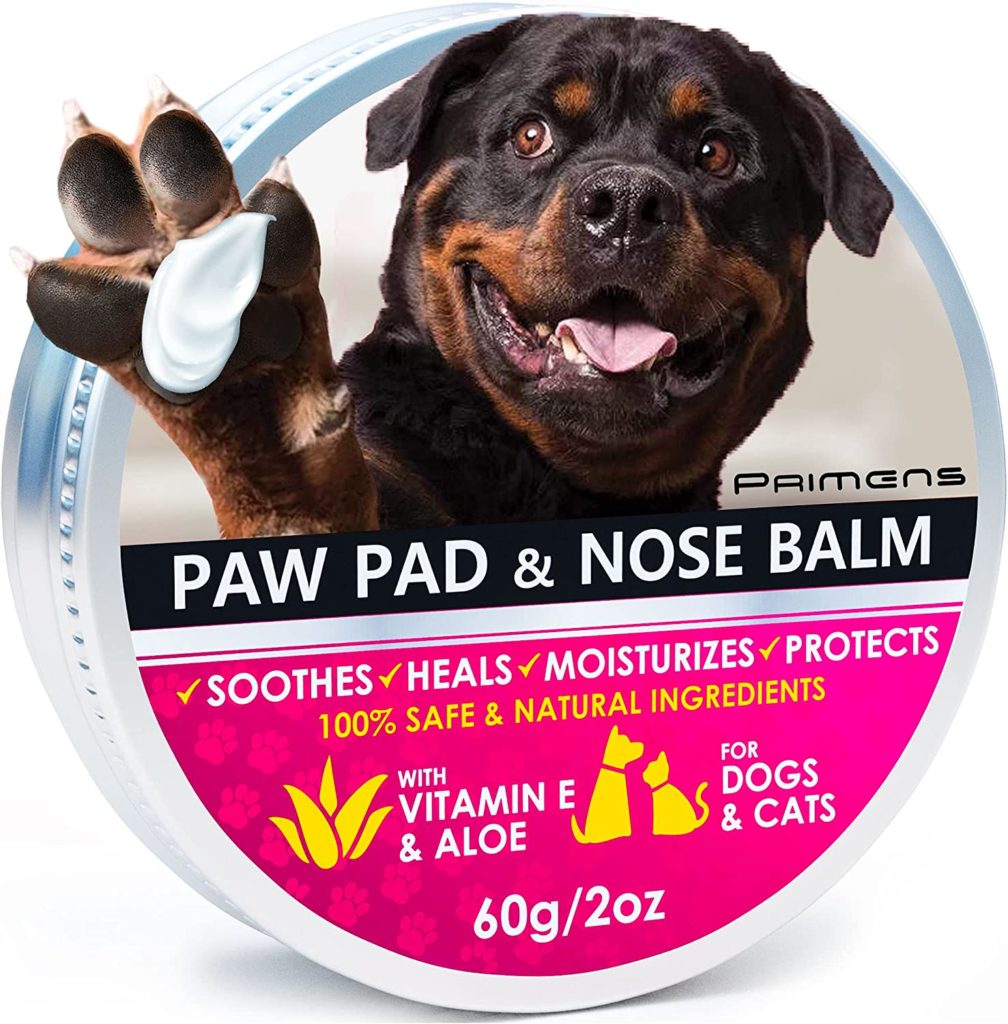
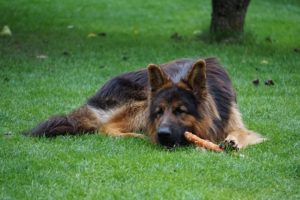
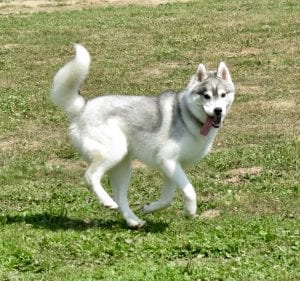

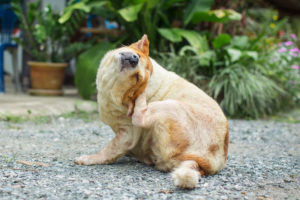
No comment yet, add your voice below!